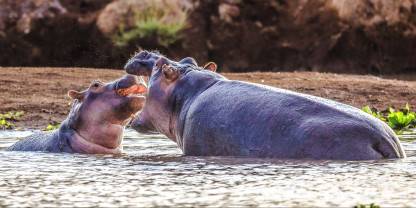Average Expert Rating
Rating Breakdown
Write a User ReviewGigantic Park on the Mombasa Highway
Tsavo West – the part of Tsavo that lies between the Mombasa Road and the Tanzanian border – contains one of the most accessible swathes of safari country in East Africa.
The main target, known as the developed area, is a hilly pocket of land in the northern section of the park, dotted with campsites and lodges with good facilities and none of the closed-door stuffiness that can afflict some of the more exclusive places on the safari circuit. The undulating terrain offers some fantastic views and there’s enough vegetation to support huge herds of buffalo, zebras and antelopes; there’s also a reasonably healthy population of lions, known for their unusually short manes (some males have no mane at all). My favourite spot is Mzima Springs, where you can explore the banks of two large pools on foot, watching birds, hippos and crocodiles. It’s popular, so if you’re travelling independently it’s best to get here early, when things are still quiet.
Kenya’s Best-Known Wilderness Park
Read more
area also hosts several impressive landmarks of recent volcanic origin, notably the Shetani Lava Flow, an area of bare black boulders whose Swahili name means ‘devil’. On a clear day, the views of Kilimanjaro are stunning. A lesser known part of Tsavo West that I have always enjoyed is Lake Jipe, which lies on the border with Tanzania and hosts plenty of hippo, elephant and waterbirds.Action at the Water’s Edge
Unexpectedly, Tsavo West National Park ended up being one of the highlights of our most recent Kenya trip. Animals tend to be a bit skittish and the thick, straggly bush isn’t the easiest for game viewing but the water hole outside our guesthouse attracted a constant stream of animals. We enjoyed seeing the same group of elephant bulls coming and going over two days as well as eland, giraffes, warthogs, yellow baboons, big herds of buffalo, waterbuck and impalas. You must know that Tsavo West is a very seasonal park and the action at the water holes only really picks up from mid-July. As the caretaker of the Kenya Wildlife Service (KWS) guesthouse said, the visitors who were there a week before us didn’t see a thing. We were lucky! Oh, and I did get a pic of a fringe-eared oryx running across the road (only the second time I managed to get a shot of this rare dry-country antelope). So, double lucky!

